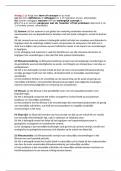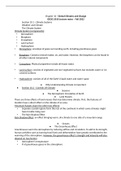Samenvatting
Summary Study Questions - Artificial Intelligence part LEC 1-3 (Artificial Intelligence & Neurocognition)
- Instelling
- Universiteit Leiden (UL)
Study questions of Artificial Intelligence & Neurocognition, the part Artificial intelligence. With this, I got a 9 for the exam. Note: this is the summary of the course given in .
[Meer zien]













